Modern surveyors have to juggle accuracy, time, and manpower more than ever before. The rise of solo surveyors and integration with BIM systems makes robotic total stations essential for modern workflows. You’ve probably heard the buzz about these total stations, but few brands carry the weight that Trimble does in the field.
Precision has a name—Trimble. A Trimble robotic total station can streamline nearly every aspect of the surveying process, from LiDAR integration to cloud data synchronization and automated monitoring. Think of the feeling of confidence you’ll have when your total station locks onto the prism perfectly every time.
Let’s look at the Trimble total stations available today. We will explore five models that give the best results. We’ll also explore how robotic models work and how to use them effectively. Explore more high-precision gear at Harper Surveying’s Total Station Collection.
What Is a Trimble Total Station?
Consider a total station like the surveyor’s eyes and brain rolled into a single package. Manual stations still give many measurements and high precision. However, they need more input from the surveyor.
Semi-robotic and robotic total stations are special tools. They provide automatic rotation and motorized adjustments. They also feature advanced electronic distance measurement (EDM) capabilities, including prism tracking.
Total stations measure angles, distances, and coordinates. They utilize both optical and electronic precision, regardless of the level of technology.
We have come a long way from classic theodolites. These tools only measured angles. Surveyors used tapes and other tools that were less accurate than EDM.
That’s where Trimble comes in. Trimble is a leader in accuracy and automation. Each Trimble robotic total station for surveying has many features. These features and connectivity options help improve efficiency while working.
Trimble built its reputation by creating software solutions like Trimble Access, ensuring durability for real-world challenges, and prioritizing field efficiency. Their robotic total stations enable one person to work independently without compromising accuracy. In contrast, manual total stations need at least two team members to operate.
These total stations are essential for creating accurate construction layouts, topographic mapping for various large-scale public projects, and monitoring and repairing infrastructure. When you have only one chance to set the grade before the concrete trucks arrive, accuracy is essential. That’s why surveyors across the industry trust the Trimble robotic total station.
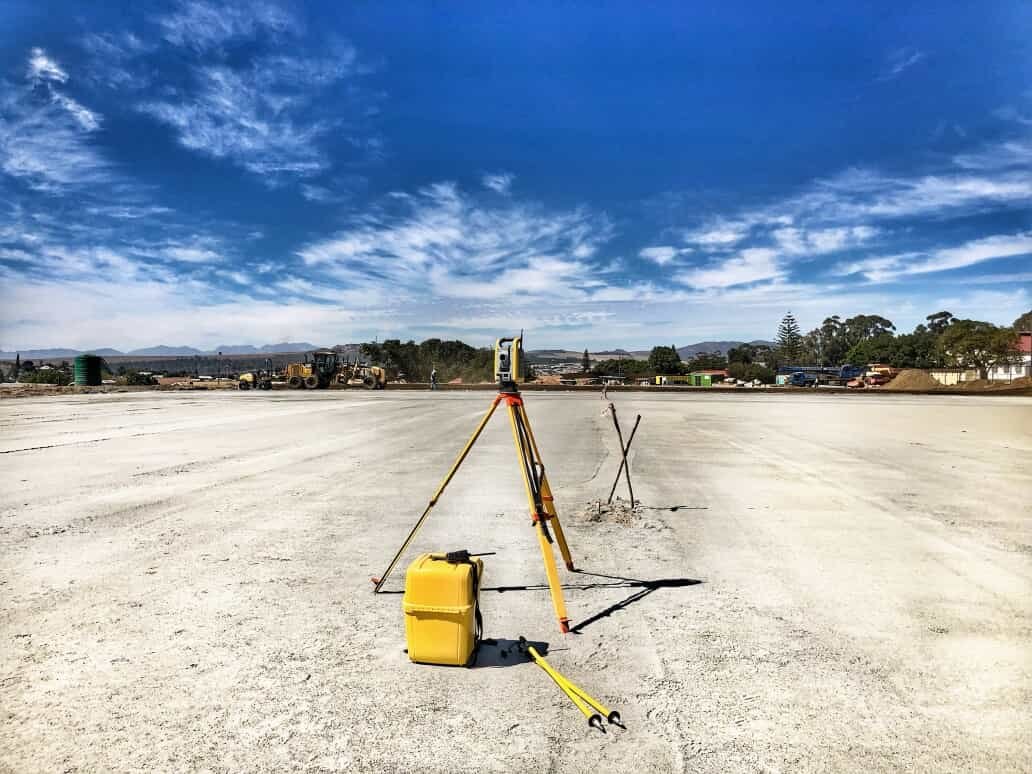
How Does a Trimble Total Station Work?
So, how does a robotic total station work in a step-by-step process?
- This advanced surveying tool automatically follows a prism. It uses sensors and servo motors to adjust its aim.
- Each Trimble robotic total station connects wirelessly to a field controller. This helps collect important data. It often uses a strong radio or Bluetooth connection. This connection works well, even far from a Wi-Fi signal.
- The operator controls the measurement process and logs data remotely, thereby improving efficiency and enabling solo operation without compromising accuracy.
A robotic total station is like having a robotic camera that never loses its focus—even when you move. Trimble’s advanced tracking technology includes MagDrive™ servos. These servos provide silent and smooth motion control, resulting in reliable measurements.
You will hear the smooth sound of servo motors turning on. They activate the Autolock™ target recognition system. The SurePoint™ feature helps adjust for any unexpected movement or vibration.
You can use Trimble controllers (TSC5 and TSC7 models) and Trimble Access software for wireless connections. This lets you operate the station remotely when needed.
Ultimately, these robotic total stations enable a single person to operate them. They expedite the setup process and significantly reduce errors and corrections. Once you see how well a Trimble robotic system works, you will find it hard to return to traditional two-person setups.
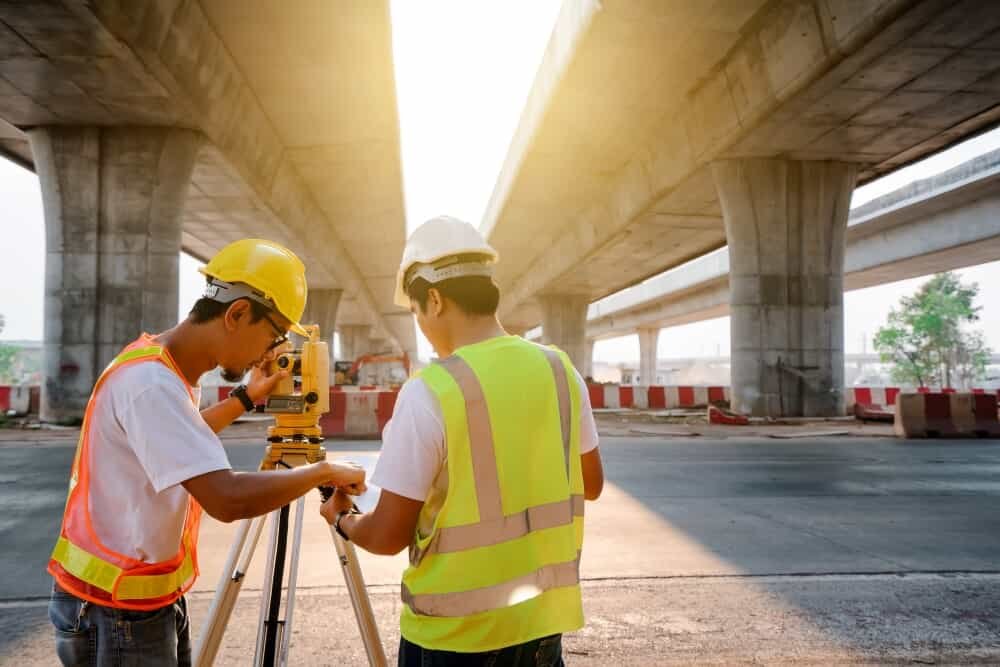
How to Use a Trimble Total Station (Field Basics)
This Trimble total station tutorial covers the basic steps for field work. It demonstrates how upgrading to robotic equipment can simplify your operations.
Set up the Tripod
Total stations work on control points, and you need to set the equipment over a known coordinate. You set up the reflector rod at another known point, creating a reference for the rest of the measurements you’ll take.
Find a firm, stable section of ground to place the tripod. Raise the tripod to approximately chest height, tighten the extension pegs, and spread the legs to form even angles. Place the feet or spikes into the ground so that they sink into the surface, then attach the Trimble robotic total station.
Level and Center
Align the base of the total station with the tripod top, then use any bolts or pegs to secure it in place. Keep a hand on the side or top of the station while fastening it in place.
Use the built-in spirit level to adjust the height of each tripod leg. Make sure the station is level and centered. Align the instrument precisely over the known point, moving the entire tripod as necessary.
Initialize the Instrument
It’s time to power up the total station! Make sure you’ve charged the batteries—you don’t want any simple issues holding you back once you’re in the field.
Consider calibrating the total station before its first use and after any major shocks, bumps, or extended storage periods. Calibration requires approximately 300 feet of clear line of sight over relatively flat terrain. You can choose from three types of calibration: compensator, collimation/trunnion axis tilt, and autolock collimation.
The instrument will do the hard work for you. Select a fixed target approximately 300 feet away for the second calibration and measure vertical angles around that distance for the third process.
Once you’re calibrated, aim at the prism while it’s in a fixed position. Test the AutoLock feature by performing a few simple movements at a distance of around 100 to 300 feet.
Connect a Controller
Turn on your field computer, tablet, or TSC7/TSC5 controller. If you are using Trimble Access, open it. Verify that all your settings and corrections align with the work you plan to do.
Measure and Record
Now you’re ready to start observing angles and distances without needing a partner to operate the total station. You can adjust the position of the prism and rod as is necessary to activate and control the station remotely. Don’t forget to direct where you want the data stored, whether that’s on the device’s built-in storage or in a secondary device connected via radio or Bluetooth.
Troubleshooting
Signal Loss: Restart the total station and controller, and verify that all cables are intact and connected. Replace the battery for a power boost. Verify the radio details, like the frequency and protocol, as well.
Prism Alignment Issues: Check the prism constant for your reflector and ensure that the measurements are set to the correct amount of correction. Make sure you use a prism that is approved for your Trimble model. Some prisms may not work with foil or acrylic reflectors.
Calibration Drift: Avoid dropping or bumping the total station, and try to limit extreme temperature changes. Re-calibrate if the error rate is too high or measurements remain out of alignment after the initial calibration.
Data Transfer
Gathering data in the field is a good start, but you’ll need to sync to Trimble Business Center or other CAD software to complete your work. The data transfer process is smooth, regardless of the method used, from onboard removable storage options to digital transfers.
Harper Surveying offers training and support that goes far beyond this basic Trimble total station tutorial. If you want more in-depth knowledge before making a purchase, check out our Trimble total station resources. Need accessories? Shop Total Station Tripods and Accessories.
The Top 5 Trimble Robotic Total Stations
Let’s explore the top Trimble robotic total station models you can choose from to upgrade your surveying workflow.
1. Trimble S5 Robotic Total Station—Reliable Precision for Everyday Surveyors
Of all the Trimble total stations for sale, the Trimble S5 is a good entry point into the world of robotic total stations. It’s an ideal total station for land surveying, especially boundary work that doesn’t require the most exacting accuracy levels. It offers the right mix of reliability and affordability. This is great for solo surveyors or teams on a budget.
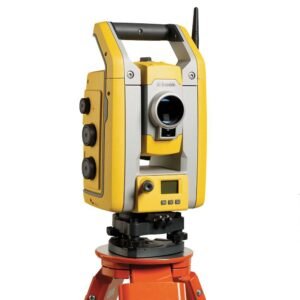
With an angular accuracy of 1″–5″ and an EDM range of up to 5 km with a prism, it has the skills to handle topographic projects and construction layout tasks with ease as well. Pros love it because of its fast locking time, intuitive operation, and smooth MagDrive technology, which is quiet and reliable. The SurePoint stability system reduces movement errors, and its substantial resale value is a bonus. It’s cost-effective and perfect for everyday jobs, like your first pickup truck that just won’t quit.
2. Trimble S7 Robotic Total Station—The All-Round Performer
If you’re looking for the best all-around Trimble total station to offer, go with the Trimble S7. This option has the same angular accuracy and EDM ranges as the previous model. It combines imaging, scanning, and surveying into a single, easy-to-use package.
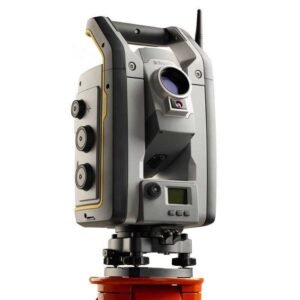
Trimble VISION™ offers 3D scanning features without needing a separate device. This makes it ideal for as-built documentation on construction sites and for measuring volumes.
This model combines camera and EDM features for greater visual site context development. Capture the details to support your measurements and obtain the scanning necessary for accurate results. Get the best of both worlds by getting a view from the scope while staying remote as a solo operator. Build stockpiles quickly with up to 15 shots per second.
3. Trimble S6 Robotic Total Station—The Field Workhorse
Choose the Trimble S6 as your durable, reliable robotic total station for construction sites full of challenges. Extreme conditions won’t affect the servo-driven MagDrive, while the lightweight design makes it easier to carry out to remote areas. Long-range tracking also increases its value on significant infrastructure projects, large boundary projects, and busy construction sites.
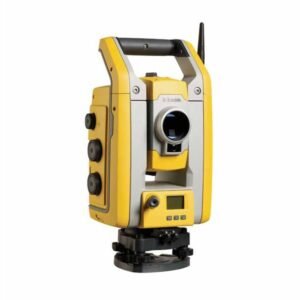
Drop this Trimble robotic total station in the dirt, wipe it off, and it will still give you millimeter accuracy. This equipment is built to work hard.
4. Trimble S8 Robotic Total Station—For High-Precision Professionals
When ultra-fine tolerances are needed for the most demanding jobs, the Trimble S8 robotic total station brings the power you need. The angle accuracy reaches 0.5 inches. This level of precision is crucial for engineering and infrastructure planning, where mistakes are unacceptable.
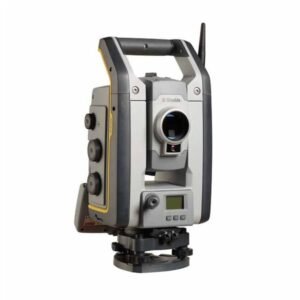
High-power EDM works well on both reflective and non-reflective targets. It significantly reduces the time required for measurements by minimizing preparation work.
The FineLock technology included in this model offers precise positioning at close range. When you’re measuring in between tall and narrow structures and every millimeter counts, the S8 doesn’t blink. It’ll take your surveying firm to the next level.
5. Trimble S9 Robotic Total Station—The Flagship of Accuracy
The Trimble S9 is the top-of-the-line model, providing ultimate precision and range. It’s not just a total station, it’s a complete data command center. Pair it with Trimble 4D Control software to automate the monitoring process. It will create accurate geodetic models and deformation analysis for your mining, tunneling, and railway projects.

This robotic total station uses DR HP EDM and FineLock technology. It offers high accuracy at longer distances compared to other Trimble models. When only the best will do, the S9 will help you complete your most demanding projects.
Choosing the Best Trimble Total Station for Your Projects
Let’s get practical. There’s a Trimble robotic total station for every type of surveying and budget. You don’t always need the priciest model, but rather the one that fits your workflow like a glove.
For small firms or field contractors: | S5 or S6 | They’re cost-efficient, dependable, and offer the accuracy needed for topographic, boundary, and construction planning projects. |
For mid-size operations needing imaging/scanning: | S7 | Eliminate the need for a separate scanner and rely on visual cues to speed up 3D imaging and as-built documentation work. |
For precision engineering or infrastructure projects: | S8 or S9 | Raise the angle accuracy as high as 0.5” and access the Trimble 4D Control software for geodetic modeling and monitoring. |
Why Professionals Trust the Trimble Total Station (and Why Harper Surveying Recommends It)
Trimble has built a strong reputation for build quality and a robust software ecosystem. You have options to change and control every feature of their total stations. This helps you work alone without losing speed or accuracy.
Harper Surveying also plays a vital role by providing authentic, warranty-covered, and thoroughly calibrated units. When you buy from us, you’re not just getting an instrument. You are getting a partner who knows your needs and workflow. They can provide you with the training and support you need throughout the equipment’s life cycle.
We want to help you get the surveying equipment you need to get the job done every time. When you’re 10 miles from the nearest road, you need surveying gear that works. That’s what Trimble and Harper Surveying can give you.
FAQs
What is the best Trimble robotic total station for construction?
The Trimble S6 is great for tough and dusty construction sites. The S5 is a budget-friendly starter option. The S8 offers high accuracy for the closest tolerances.
Which Trimble total station is most accurate?
For ultimate accuracy, aim for the S9 robotic total station. It has the precision needed for complex BIM demands and infrastructure planning.
What is the best way to learn how to set up a Trimble total station in the field?
Use Harper Surveying’s training materials to get more experience in accurately leveling, centering, and calibrating your new equipment.
What factors should you consider before purchasing a robotic total station?
Start with project type, which determines the accuracy level and features you need. Consider your budget, crew size, and environmental challenges as well.
Why should you buy Trimble total stations from authorized sellers like Harper Surveying?
The best way to maintain access to firmware updates, after-sales support, training, and calibration is through this method. You’ll also enjoy warranty coverage and a range of servicing options.
What common mistakes do people make when buying Trimble robotic total stations?
Overbuying is a common issue. If you don’t need the features of an advanced model, something like the S5 or S6 will work just fine.
Final Thoughts: Precision Meets Confidence
Surveying may be based on science, but trust also plays a crucial role in its foundation. With a Trimble robotic total station, you get both in one package.
Check out Harper Surveying’s full range of Trimble total stations. This includes popular models and useful accessories to enhance their use. Every successful infrastructure and construction project starts with precise measurements. Make yours count with Trimble and start your free consultation today.